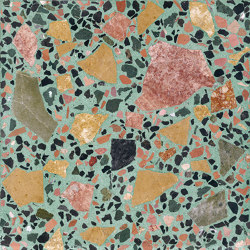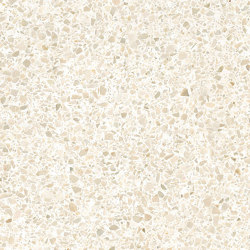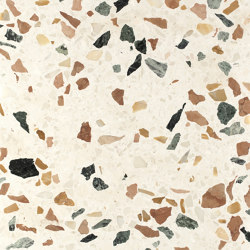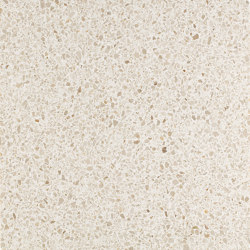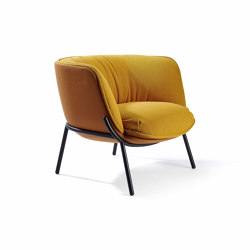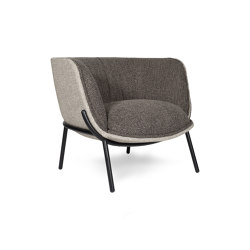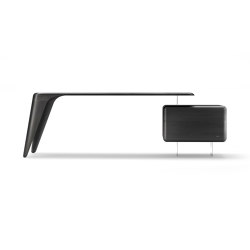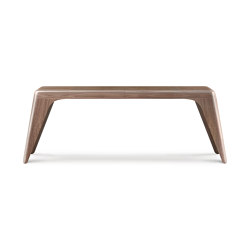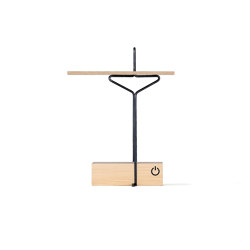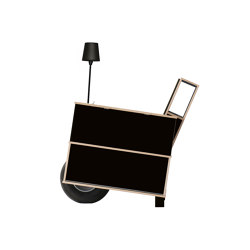Über GOLRAN 1898
MEHR üBER GOLRAN 1898
An instinctive feel for skilled Persian craftsmanship, a natural eye for beauty, a flair for innovation, assiduous visits to the production sites and the respect garnered by carpet merchants in the East since ancient times have all ensured that the business passed down to the fourth generation of the Golran family has evolved through a combination of well-informed passion and a desire for contemporaneity. Created from original designs by some of the most sensitive international designers (Isabella Sodi, Bertjan Pot, Raw Edges, Inga Sempè and Dimore Studio, to mention just the first, now consolidated partnerships) led by Francesca Avossa’s art direction team and manufactured by expert Nepalese, Indian, Turkish and Persian knotters and weavers, with the very finest raw materials and ethical awareness. Equally, determined not to lose sight of their precious heritage, they have continued to deploy their skills, sourcing and acquiring unique antique pieces dating from the 19th and early 20th century for their Traditional “Antique”
collections. In autumn 2016, the range went on sale in the brand’s first flagship store in Milan, where you can touch and feel the substance of the connection and ties between the stories, places, traditions, cultures and emotions that breathe life into the coveted composite harmony of a Golran carpet. The store was conceived by the Storage Associati architectural practice with art direction by the Francesca Avossa Studio.
THE COMPANY, A FAMILY HISTORY
Their nomadic story began in 1898 in Mashad, Persia, with the trading and manufacture of carpets, emulating to some extent the destiny of the objects they produce: headquarters in Milan since 1968, production in Nepal from early 2000, art direction in Paris as of 2010, global marketing right from the outset. The business Eliahu, Elia, Nathan and Benjamin inherited from their great grandfather Hajizadeh Golran, then handed down by their fathers, Nemat and Ruben, along with the teachings of the great master knotters in Persia, Turkey and India form the precious cultural background, now accessible to the design world and tailored to the technological evolution. With unfailing skill, reliability and passion, the company identity is shaped by the desire to keep past skills alive and a feel for innovation, channelled by meticulous attention to the creative artisan processes and the influences of artistic and design expression of every time and place. The organisation, of the Nepalese production sites in particular, means that even the most diverse demands for personalized products can be accommodated, which, along with Golran’s traditional and contemporary collections, make it an irrefutable point of reference for the antiques and contemporary markets.
CONTEMPORARY COLLECTIONS
Faithful to the brand’s Persian cultural roots, Golran has consolidated its editorial status over the last few years, with a dedicated range harnessing luxury craftsmanship and decorative merit in a contemporary key. This has paved the way for contemporary carpets, no longer simply vehicles for fashion and taste, and for the technical refinement and great aesthetic comfort dictated by increasingly sophisticated decorative schemes. Since the launch of its Carpet Reloaded collection in 2008, featuring an innovative process of decolouring and re-dyeing vintage carpets, Golran has brought out its own contemporary collections, informed by creative interior design and design figures coordinated by Francesca Avossa’s art direction studio.
KNOW-HOW AND MANUFACTURE
Carpets contain a multitude of secrets, which only time can reveal. There is the raw material, on which the
final, enduring result depends, and the levels of depth and stability of the colouring that only the requisite experience can
achieve. Then there are the many, concentrated hours of work that go into each of the
many stages of the production process, from hand knotting to washing, drying and final checks, all of which
require well-tested skills and abilities. Behind all this are the hands of men and women, and ancient and modern tools whose
use is passed down from generation to generation: from the vertical looms that ensure greater knotting precision and afford
an opportunity to create even very large-scale products on demand, to the computerised encoded technical design maps on
which the weavers and knotters focus constantly as they go about their work. Lastly there are the smaller tools:
combs, scissors, hooks, spindles and brushes. Along with the skills needed to create the desired pattern
that makes every Golran carpet different and unique, the dedicated artistic sensitivity of the artisans leads to the introduction
of original variations of the different traditional techniques, culminating in the precious, happy marriage of centuries-old craftsmanship
and contemporary design.
PROJECTS
Age-old expertise and high quality products have also made Golran the ideal partner for production for other brands from diverse industries: restaurants, hotels, fashion houses, offices, and shops. Over the years, the company has established enduring production relationships as a supplier for brands such as:
Hotels: Mamilla Hotel in Jerusalem designed by Piero Lissoni, Conservatorium Hotel in Amsterdam, Grand Hotel Billia in Saint-Vincent, Casino de La Valee in Saint-Vincent, W Retreat & Spa – Vieques Island by Patricia Urquiola, Venice Palazzina Grassi by Philippe Stark, Westin Palace in Lima, Grand Hotel et de Milan in Milan.
Restaurants: Dsquared Dimore Restaurant in Milan, D & D Ahmed Khalil in London, Noura Printemps in Paris.
Fashion: Fendi, Roberto Cavalli, MaxMara, Marina Rinaldi, Diesel, Mauro Grifoni, Jacob Cohen, Tods.
Offices: Studio PS • design consultants Milan, Technogym SPA, Fossil Group Europe.
CUSTOM MADE
The custom made service is aimed at architects, interior designers, and design firms that operate within both the sphere of private homes and that of contracted work. The carpets are custom created with exact specifications for yarn type, shape, size, and color. The materials used are the most luxurious: silk, cotton, wool, angora, hemp, mohair, linen, and cashmere. The choice of colors is almost endless with a palette of over 1,000 different shades and hues. Extremely versatile options allow the possibility to adapt, in shape and size, to any environment and space.
An instinctive feel for skilled Persian craftsmanship, a natural eye for beauty, a flair for innovation, assiduous visits to the production sites and the respect garnered by carpet merchants in the East since ancient times have all ensured that the business passed down to the fourth generation of the Golran family has evolved through a combination of well-informed passion and a desire for contemporaneity. Created from original designs by some of the most sensitive international designers (Isabella Sodi, Bertjan Pot, Raw Edges, Inga Sempè and Dimore Studio, to mention just the first, now consolidated partnerships) led by Francesca Avossa’s art direction team and manufactured by expert Nepalese, Indian, Turkish and Persian knotters and weavers, with the very finest raw materials and ethical awareness. Equally, determined not to lose sight of their precious heritage, they have continued to deploy their skills, sourcing and acquiring unique antique pieces dating from the 19th and early 20th century for their Traditional “Antique”
collections. In autumn 2016, the range went on sale in the brand’s first flagship store in Milan, where you can touch and feel the substance of the connection and ties between the stories, places, traditions, cultures and emotions that breathe life into the coveted composite harmony of a Golran carpet. The store was conceived by the Storage Associati architectural practice with art direction by the Francesca Avossa Studio.
THE COMPANY, A FAMILY HISTORY
Their nomadic story began in 1898 in Mashad, Persia, with the trading and manufacture of carpets, emulating to some extent the destiny of the objects they produce: headquarters in Milan since 1968, production in Nepal from early 2000, art direction in Paris as of 2010, global marketing right from the outset. The business Eliahu, Elia, Nathan and Benjamin inherited from their great grandfather Hajizadeh Golran, then handed down by their fathers, Nemat and Ruben, along with the teachings of the great master knotters in Persia, Turkey and India form the precious cultural background, now accessible to the design world and tailored to the technological evolution. With unfailing skill, reliability and passion, the company identity is shaped by the desire to keep past skills alive and a feel for innovation, channelled by meticulous attention to the creative artisan processes and the influences of artistic and design expression of every time and place. The organisation, of the Nepalese production sites in particular, means that even the most diverse demands for personalized products can be accommodated, which, along with Golran’s traditional and contemporary collections, make it an irrefutable point of reference for the antiques and contemporary markets.
CONTEMPORARY COLLECTIONS
Faithful to the brand’s Persian cultural roots, Golran has consolidated its editorial status over the last few years, with a dedicated range harnessing luxury craftsmanship and decorative merit in a contemporary key. This has paved the way for contemporary carpets, no longer simply vehicles for fashion and taste, and for the technical refinement and great aesthetic comfort dictated by increasingly sophisticated decorative schemes. Since the launch of its Carpet Reloaded collection in 2008, featuring an innovative process of decolouring and re-dyeing vintage carpets, Golran has brought out its own contemporary collections, informed by creative interior design and design figures coordinated by Francesca Avossa’s art direction studio.
KNOW-HOW AND MANUFACTURE
Carpets contain a multitude of secrets, which only time can reveal. There is the raw material, on which the
final, enduring result depends, and the levels of depth and stability of the colouring that only the requisite experience can
achieve. Then there are the many, concentrated hours of work that go into each of the
many stages of the production process, from hand knotting to washing, drying and final checks, all of which
require well-tested skills and abilities. Behind all this are the hands of men and women, and ancient and modern tools whose
use is passed down from generation to generation: from the vertical looms that ensure greater knotting precision and afford
an opportunity to create even very large-scale products on demand, to the computerised encoded technical design maps on
which the weavers and knotters focus constantly as they go about their work. Lastly there are the smaller tools:
combs, scissors, hooks, spindles and brushes. Along with the skills needed to create the desired pattern
that makes every Golran carpet different and unique, the dedicated artistic sensitivity of the artisans leads to the introduction
of original variations of the different traditional techniques, culminating in the precious, happy marriage of centuries-old craftsmanship
and contemporary design.
PROJECTS
Age-old expertise and high quality products have also made Golran the ideal partner for production for other brands from diverse industries: restaurants, hotels, fashion houses, offices, and shops. Over the years, the company has established enduring production relationships as a supplier for brands such as:
Hotels: Mamilla Hotel in Jerusalem designed by Piero Lissoni, Conservatorium Hotel in Amsterdam, Grand Hotel Billia in Saint-Vincent, Casino de La Valee in Saint-Vincent, W Retreat & Spa – Vieques Island by Patricia Urquiola, Venice Palazzina Grassi by Philippe Stark, Westin Palace in Lima, Grand Hotel et de Milan in Milan.
Restaurants: Dsquared Dimore Restaurant in Milan, D & D Ahmed Khalil in London, Noura Printemps in Paris.
Fashion: Fendi, Roberto Cavalli, MaxMara, Marina Rinaldi, Diesel, Mauro Grifoni, Jacob Cohen, Tods.
Offices: Studio PS • design consultants Milan, Technogym SPA, Fossil Group Europe.
CUSTOM MADE
The custom made service is aimed at architects, interior designers, and design firms that operate within both the sphere of private homes and that of contracted work. The carpets are custom created with exact specifications for yarn type, shape, size, and color. The materials used are the most luxurious: silk, cotton, wool, angora, hemp, mohair, linen, and cashmere. The choice of colors is almost endless with a palette of over 1,000 different shades and hues. Extremely versatile options allow the possibility to adapt, in shape and size, to any environment and space.
MEHR üBER GOLRAN 1898

